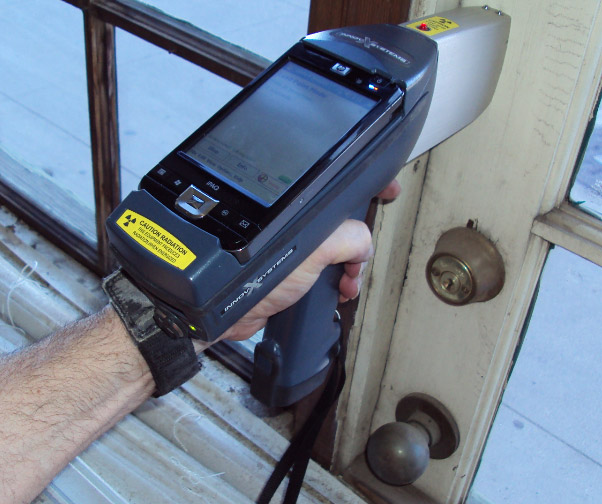DOH & HPD Lead Violation Removal NYC-- Professional Solutions for Compliance
DOH & HPD Lead Violation Removal NYC-- Professional Solutions for Compliance
Blog Article
Ideal Practices for Ensuring Safe and Complete Lead Infraction Reduction
Dealing with lead violation abatement needs a multi-faceted approach to make certain both safety and security and conformity. It's the final clearance process, including detailed examinations and research laboratory testing, that truly validates a lead-free environment, making certain lasting safety and security. Exactly how do these practices interconnect to assure extensive lead abatement?

Initial Evaluation
Performing a preliminary analysis is an essential very first step in lead violation reduction. This phase incorporates an in-depth assessment of the residential or commercial property to identify the existence, extent, and details places of lead-based threats. Qualified professionals, such as qualified lead assessors or risk assessors, must carry out a comprehensive website examination, making use of devices like X-ray fluorescence (XRF) analyzers to accurately spot and determine lead focus in paint, dust, soil, and water.
The assessment must also include a review of the building's history, previous records, and any type of complaints or health and wellness concerns reported by residents - Lead Removal Contractors. Recording the findings thoroughly is essential, as these records create the basis for developing an efficient reduction strategy. An extensive analysis also includes tasting and research laboratory analysis, which are vital to validate the presence of lead and guide subsequent actions
Moreover, it is important to interact the outcomes transparently to all stakeholders, consisting of residential or commercial property owners, occupants, and governing authorities. By making certain that the initial assessment is carried out with precision and rigor, experts can lay a strong structure for a targeted and effective lead reduction procedure, inevitably guarding public wellness and making certain conformity with governing criteria.
Correct Control
Correct control is important to prevent the spread of lead impurities throughout abatement tasks. Successfully managing control lessens the risk of lead dirt and debris moving to non-work locations, thereby guarding both the atmosphere and individuals outside the instant work area.

Regular assessments of the containment location are essential to inspect for breaches or weak points in the barrier. Any type of identified problems should be immediately addressed to preserve the honesty of the control. By sticking to these techniques, abatement projects can efficiently control lead contamination and alleviate affiliated health and wellness threats.
Worker Security
Ensuring worker defense is critical throughout lead reduction projects to avoid occupational direct exposure to unsafe lead particles. Necessary measures include using individual protective devices (PPE) such as respirators, handwear covers, and full-body fits particularly designed to obstruct lead dirt and fumes. Employees ought to undertake comprehensive training on the appropriate use and maintenance of PPE, consisting of healthy screening for respirators to guarantee optimum efficacy.
Design controls, such as local exhaust air flow systems, are critical in minimizing airborne lead focus in the workplace. Management controls ought to additionally be executed, including limiting the duration of exposure and turning workers to reduce private exposure times. Normal clinical security and biological monitoring are indispensable for early detection of lead absorption, enabling timely intervention and therapy.
Furthermore, developing a purification method is essential. Employees have to adhere to rigid purification procedures before breaks and at the end of their shift to prevent lead dust from being carried outside the workplace. This consists of complete hand and face cleaning with lead-specific cleaning agents and changing out of infected garments.
Careful Clean-up
Maintaining a safe workplace extends beyond employee security and encompasses meticulous cleaning to make sure lead particles are thoroughly gotten rid of from the site. The process of thorough clean-up is crucial in preventing the recontamination of the moderated area and safeguarding both existing and future passengers.
To achieve a thorough clean-up, all job locations must be methodically decontaminated. This entails making use of specialized HEPA (High-Efficiency Particulate Air) vacuum cleaner cleaners and wet-wiping strategies to capture and get rid of fine lead dirt that may have cleared up on surfaces. It is critical to clean up all straight surfaces, consisting of floors, window sills, and kitchen counters, in addition to upright surfaces that may have entraped lead particles.
Employees must use ideal personal protective equipment (PPE) throughout cleaning to avoid direct exposure to recurring lead dust. Utilized cleansing materials such as wipes, sponges, and mop heads must be dealt with in conformity with hazardous waste disposal policies.

Final Clearance
Final clearance is the critical wrapping up stage of lead reduction that identifies whether the website is secure for reoccupation. This crucial action entails comprehensive assessment and screening to validate that all lead risks have been properly removed. The process begins with a visual assessment by a qualified lead-based paint assessor or risk assessor to guarantee no visible dust or particles continues to be. This is adhered to by accumulating dirt wipe samples from various surfaces, including floors, windowsills, and other horizontal surfaces. Lead Removal Contractors.

Last clearance screening not only protects future owners however likewise ensures conformity with regional, state, and federal regulations. It offers as a recorded validation of the reduction specialist's adherence to industry ideal methods. Ensuring a detailed and effective final clearance is necessary in protecting public health and promoting rely on the reduction process.
Verdict
Guaranteeing secure and extensive lead offense abatement demands a diverse strategy including first assessments with innovative detection techniques, reliable containment methods, stringent employee defense protocols, and careful cleanup procedures. The last clearance stage, featuring in-depth inspections and lab screening, is crucial to verify conformity with EPA standards. Adherence to these best methods assures a safe atmosphere for passengers, minimizes health dangers, and maintains governing requirements, thus advertising public wellness and safety check it out and security in lead-affected areas.
Report this page